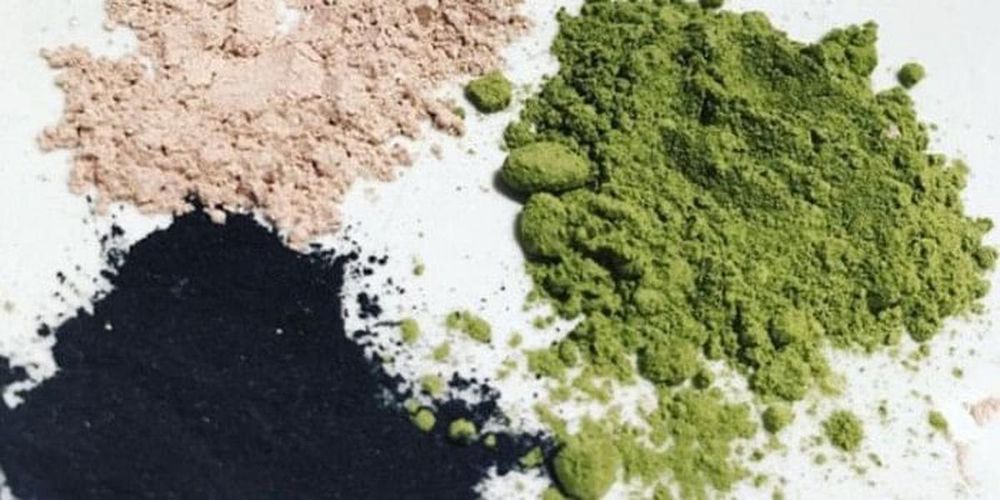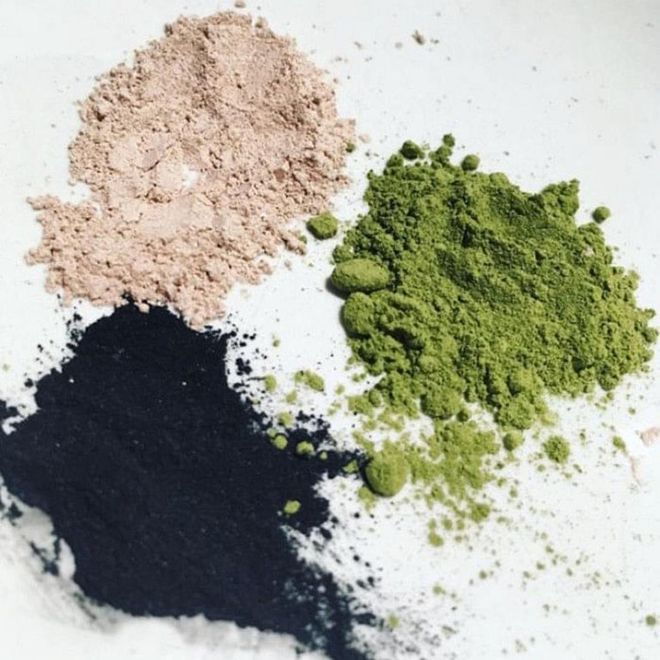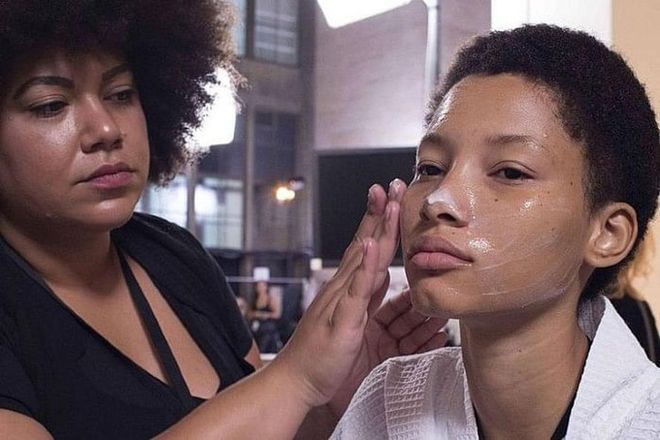Homemade Face Mask Recipes: How To Make Your Own Spa-Worthy Face Masks At Home
All the ingredients you need are probably already hiding in your kitchen cupboard


Photo: Courtesy
DIY Face Masks
Face masks are a great source of skin-soothing, glow-boosting stress relief - working to hydrate dry patches, minimise pores and nourish skin.
While there are many excellent options available to purchase, there are also plenty of at-home recipes that allow you to mix up your own natural formulas, featuring ingredients that you might already have in your cupboards or fridge.
Like yoghurt, which boasts exfoliating properties on par with our most-loved skincare products; or honey, which is brilliant at busting spot-causing bacteria; and cacao powder, which is a great glow-booster. Here are the best and most spa-worthy homemade face masks to whip up right now.
Related article: Your Skin Could Be More Polluted Than You Imagine

Photo: Victor Virgile / Getty
DIY Face Masks
❝ DIY face mask recipe to... hydrate and nourish
No one wants a flaky forehead, so if your current moisturiser isn't doing much to quench your dry skin, look no further than this trio to hydrate and nourish.
What you need:
- 1/2 an avocado.
- 1 tablespoon of honey.
- A handful of oats or oat bran.
How it works:
Yes, it sounds like an Instagram-worthy breakfast, but refrain from eating the ingredients, because they'll work much better on your skin.
According to Clean Beauty co-founder Dominika Minarovic, honey is an excellent humectant, which means it helps skin retain moisture without feeling oily, among many other beneficial properties. "It's a wonder ingredient," says Minarovic. "Massaged on to affected areas, it helps with the appearance of scars and increases both healing and tissue regeneration."
If you want to step up your face mask game, mix it with oats - an ingredient even beauty brands like Aveeno and Garnier pack into their moisturisers.
"Oats have healing and moisturising properties," explains Minarovic. "They're brilliant at nourishing, calming and soothing skin, too."
Thanks to the ultra-nourishing oils, the addition of mashed avocado will banish any roughness, leaving your skin silky smooth. If you don't have any at home, substitute for three tablespoons of milk.
"Adding milk, which contains lactic acid, will gently exfoliate the skin while brightening without irritation," explains Lorraine Scrivener, skin expert and director at Eden Skin Clinic.
Leaving it on for 15 minutes is ample.
❝ DIY face mask recipe to... improve uneven skin texture and tone
Here's a recipe to help you achieve super-smooth and supple skin.
What you need:
- 1 tablespoon of natural, plain yoghurt.
- 1 tablespoon of honey.
- 1 tablespoon of turmeric powder.
How it works:
Just like milk, yoghurt is filled to the brim with lactic acid which makes a visible difference to skin by lifting away rough and lacklustre surface cells to uncover much newer, brighter ones. If it's good enough for Priyanka Chopra, it's good enough for us.
Thanks to moisture magnet honey, skin feels soft and elasticised, while Kate Protopapas, founder of Isla Apothecary, mentions that turmeric is useful for combating pigmentation - perfect if you've been out in the sun a little too long.
❝ DIY face mask recipe for... an otherworldly glow
If a dull and lacklustre complexion is your biggest beauty bugbear, this is the mask for you - and there isn't a strong acid in sight. Those with sensitive skin, rejoice.
What you need:
- 1 tablespoon of cacao powder.
- 1/4 papaya.
- A squeeze of Aloe Vera gel.
How it works:
Aloe Vera is filled to bursting with vitamins A, C, E, B1, B2, B3, B6 and B12 which means its radiance-boosting, skin-soothing and hydrating properties are almost unrivalled. Teamed with papaya - which is packed with exfoliating enzymes that will dissolve dead skin cells - it'll take your face mask regime (and skin) to the next level. The added cacao powder works wonders, too.
When layered over clean skin, it has the ability to brighten and boost circulation for a plump and pillowy look and feel.
Simply add all three ingredients into a bowl, stir, leave on for 10 minutes and tissue off.
❝ DIY face mask recipe to... fight acne and blemishes
Whether it's an angry red acne cluster or a team of pesky whiteheads, this wonder trio could prove a soothing and natural remedy.
What you need:
- 1 tablespoon of manuka honey.
- 1 teaspoon of turmeric powder.
- 1/2 teaspoon of Dead Sea salt.
How it works:
Both the healing and bacteria-zapping properties of manuka honey are impressive, while turmeric is brilliant at bringing down redness.
"Turmeric is a great option for raw, acne prone, angry skin," says Isla Apothecary's Protopapas. "It is anti-inflammatory and anti-bacterial. Incorporating Dead Sea salt will also help to clean, reduce inflammation and infection. A little goes a long way."
Together, they launch a three-pronged attack on infection, irritation, swelling and excess sebum which can block pores and leads to spots and blackheads.
Just mix them together, use a clean foundation brush to apply to your face (paying extra attention to your T-Zone), and let it work its magic for 10-15 minutes before rinsing off with warm water.

Photo: Getty
DIY Face Masks
Related article: The Sleeping Masks That Hydrate Skin As You Snooze
❝ DIY face mask recipe to... minimise enlarged pores
Despite what you might have heard, there's actually no real way to 'close up' your pores, but there are clever ways to obscure them.
What you need:
- 1 egg white.
- 1 tablespoon of honey.
- A little squeeze of lemon juice.
How it works:
Both the egg white and lemon juice have clever astringent properties which will tighten the skin and make enlarged pores much less obvious, which acts as the perfect pre-foundation ritual.
The addition of honey is important, as it'll boost your skin's moisture levels, provide suppleness and take away that uncomfortable, taught feeling.
❝ DIY face mask recipe to... combat oily skin
"This is a great remedy for decongested pores," says Lorraine Scrivener, and seeing as excess sebum can lead to spots, this is a good way to target them before they erupt.
What you need:
- 1/2 an avocado.
- 1/4 cucumber, blended.
How it works:
"This is a super-cooling mask that will leave the skin feeling clean and fresh," says Scrivener.
"Cucumber mainly contains water which will hydrate [if skin is dehydrated, it sometimes produces more oil to compensate] but it also contains vitamin C and this will reduce any breakout activity."
As for the avocado? It cleverly regulates oil production, and according to Scrivener, it's rich in Oleic Acid which helps reduce inflammation, "all whilst working on those fine lines."

Photo: Getty
DIY Face Masks
❝ DIY face mask recipe to... protect against pollution
We're only just beginning to understand the damaging effects that environmental aggressors like pollution (especially particulate matter and CO2) have on our skin, but that's where this savvy concoction from the girls at Clean Beauty comes in.
What you need:
- A handful of ground almonds.
- 2 tablespoons of olive oil.
How it works:
It might not sound like much, but the fatty acid content from the almonds is able to penetrate the skin, leaving it soft and supple, while the vitamin E from the olive oil acts like a coat of armour against free radicals which can lead to dullness, dehydration and fine lines.
If you really want to amp up the protection, add a teaspoon of the Bloom Absolute Matcha Green Tea Powder, £16. High in antioxidants (which are essentially vitamins that deflect the bad stuff) it'll neutralise pesky free radicals and, in turn, help prevent the breakdown of collagen.
Leave it on for 10 minutes, but before rinsing it off, gently massage the paste into your skin to really dislodge everyday grime, make-up, dead cells and oil.
Something to remember before you raid your kitchen cupboards
1. AVOID APPLYING CERTAIN INGREDIENTS DIRECTLY ONTO YOUR SKIN
"DIY face masks are perfectly safe," says Scrivener, "but there are a few at-home products you should avoid putting directly on to the skin without pre-mixing first, such as lemons and apple cider vinegar."
WHY?
"These could make the skin sensitive to light and could also could possibly cause skin bleaching," she explains.

Photo: Getty
DIY Face Masks
2. CHECK SELL-BY DATES CAREFULLY
The tub of yoghurt that's been in your fridge for ages? Don't use it - even if it's unopened. If you wouldn't eat it, it's not a good idea to slather it all over your face - you want skin that's clear and glowing, not full of red blotches.
3. DO A PATCH TEST FIRST
Just like trying out a new laser or acid treatment, it pays to do a quick patch test to see how your skin will react.
"If in doubt, patch test on an area that is out of site, like the side of the neck before applying all over the face," says Scrivener.
She adds, "skin products purchased over the counter undergo rigorous testing and contain preservatives and anti-irritants and whilst raw ingredients may seem more of a natural alternative it's always best to test them first."
4. USE THE MASK ON THE DAY YOU MAKE IT
Ingredients exposed to air and bacteria will very quickly go off and could easily irritate the skin. To be on the safe side, make your mask with fresh ingredients and use it within an hour of mixing.
This article originally appeared on Harper's BAZAAR UK.
Related article: The Best Anti-Ageing Serums That Help Restore Radiance and Skin Elasticity